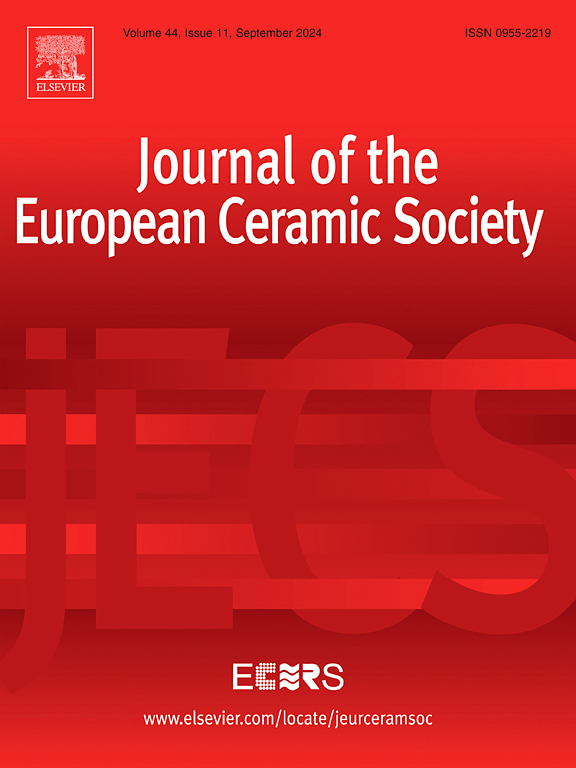High porosity and robust strength silicon carbide ceramic membrane for water treatment
IF 5.8
2区 材料科学
Q1 MATERIALS SCIENCE, CERAMICS
Journal of The European Ceramic Society
Pub Date : 2025-04-23
DOI:10.1016/j.jeurceramsoc.2025.117478
引用次数: 0
Abstract
Silicon carbide (SiC) ceramic membranes are renowned for their excellent properties, finding extensive applications across various fields. However, achieving a balance between porosity and strength poses a persistent challenge. This study uses a freeze-drying method to prepare a silica sol-starch composite xerogel as a pore-forming agent. The structural stability of the composite xerogel plays a critical role in supporting the pore structure during pressing, thus enhancing porosity and achieving a homogeneous microstructure. At approximately 1400 °C, carbon derived from the starch carbonizes and reacts with SiO2 in the pore-forming agent via a carbothermal reduction, generating fine SiC particles. These particles further undergo recrystallization among the starting SiC particles, forming uniform pore structures to improve open porosity and robust sintering necks. With the pore-forming agent's dosage optimized to 15 %, the resulting high open porosity of 55.6 %, enhanced permeability, and improved mechanical strength of 54.9 MPa.
用于水处理的高孔隙率、高强度碳化硅陶瓷膜
碳化硅(SiC)陶瓷膜以其优异的性能而闻名,在各个领域都有广泛的应用。然而,实现孔隙度和强度之间的平衡是一个持久的挑战。本研究采用冷冻干燥法制备二氧化硅溶胶-淀粉复合干凝胶作为成孔剂。复合干凝胶的结构稳定性在挤压过程中对孔隙结构的支持起着关键作用,从而提高孔隙率并实现均匀的微观结构。在1400℃左右,淀粉中产生的碳碳化,并通过碳热还原与成孔剂中的SiO2发生反应,生成细小的SiC颗粒。这些颗粒进一步在初始SiC颗粒之间再结晶,形成均匀的孔隙结构,提高了孔隙率和烧结颈的坚固性。当成孔剂用量为15 %时,孔隙度达到55.6% %,渗透率提高,机械强度提高54.9 MPa。
本文章由计算机程序翻译,如有差异,请以英文原文为准。
求助全文
约1分钟内获得全文
求助全文
来源期刊

Journal of The European Ceramic Society
工程技术-材料科学:硅酸盐
CiteScore
10.70
自引率
12.30%
发文量
863
审稿时长
35 days
期刊介绍:
The Journal of the European Ceramic Society publishes the results of original research and reviews relating to ceramic materials. Papers of either an experimental or theoretical character will be welcomed on a fully international basis. The emphasis is on novel generic science concerning the relationships between processing, microstructure and properties of polycrystalline ceramics consolidated at high temperature. Papers may relate to any of the conventional categories of ceramic: structural, functional, traditional or composite. The central objective is to sustain a high standard of research quality by means of appropriate reviewing procedures.
 求助内容:
求助内容: 应助结果提醒方式:
应助结果提醒方式:


